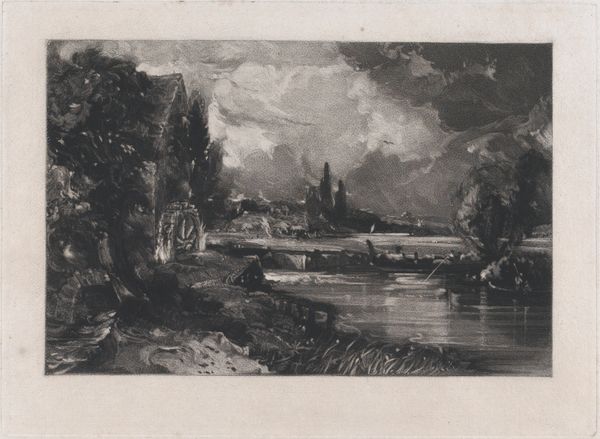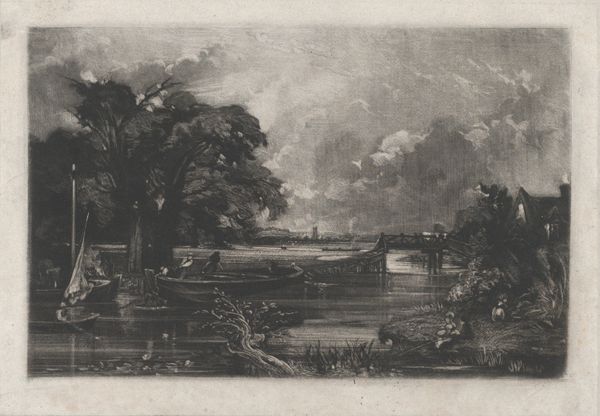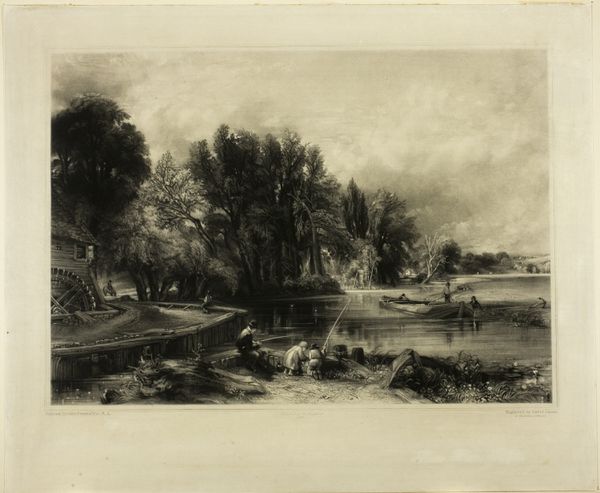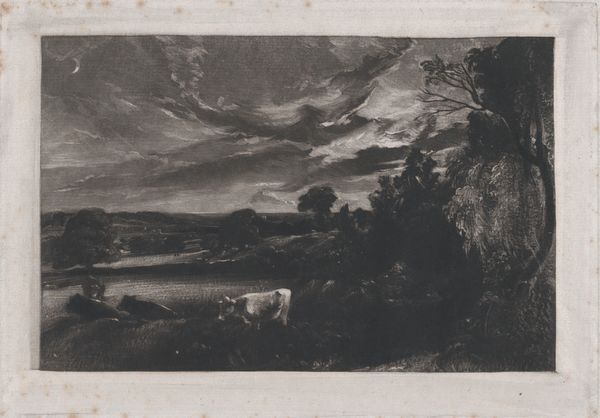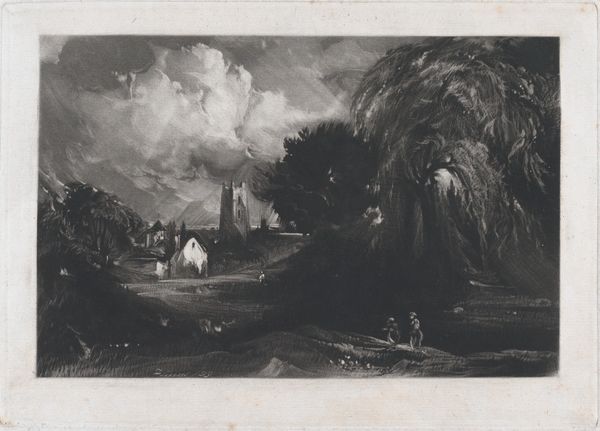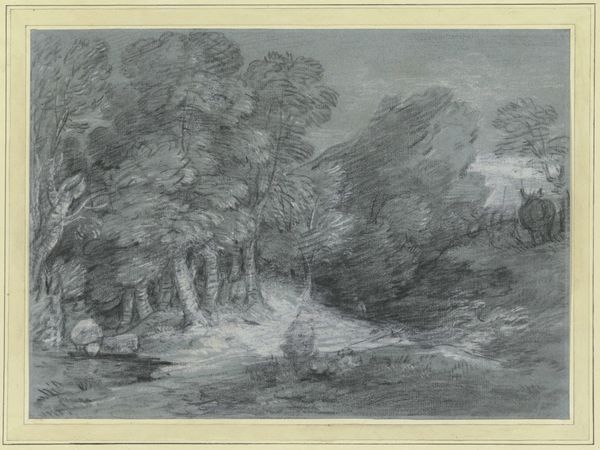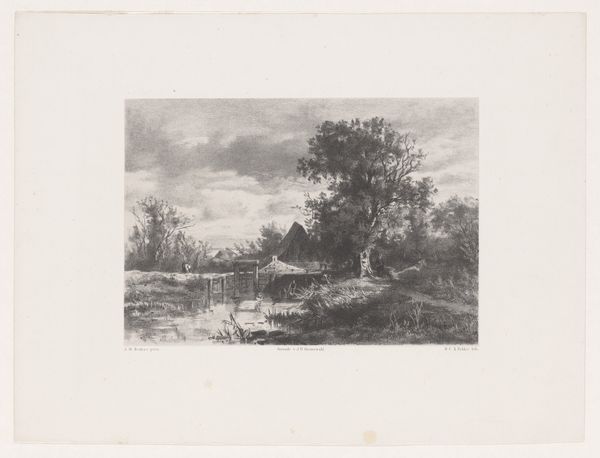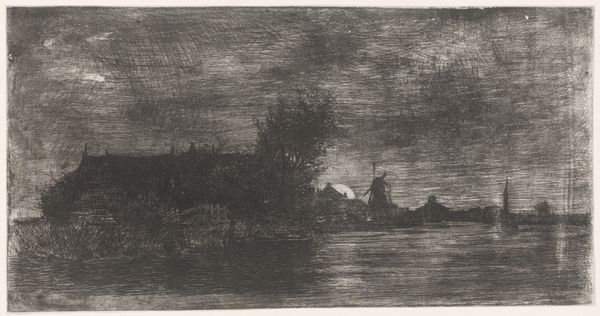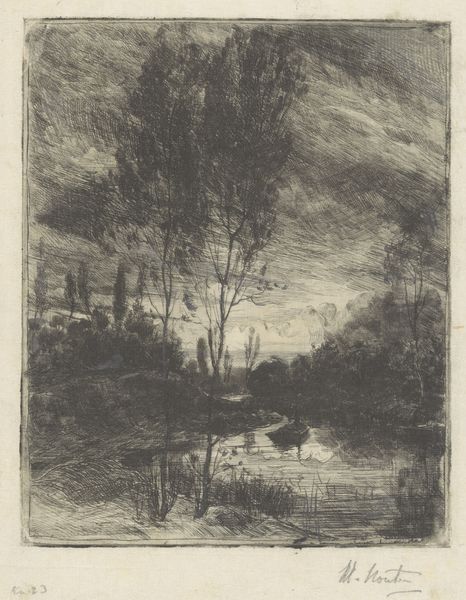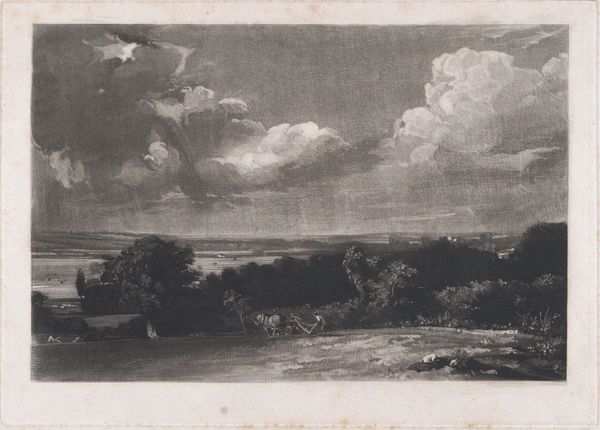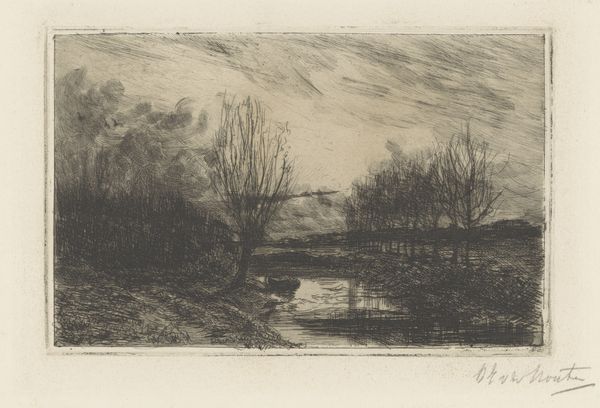
drawing, print, etching, intaglio
#
drawing
# print
#
etching
#
intaglio
#
landscape
#
romanticism
#
water
Dimensions: Image: 5 5/8 × 8 7/16 in. (14.3 × 21.4 cm) Plate: 7 1/4 × 9 15/16 in. (18.4 × 25.2 cm) Sheet: 9 15/16 × 12 7/8 in. (25.2 × 32.7 cm)
Copyright: Public Domain
Curator: Let’s explore “A Mill,” an etching by David Lucas from 1829. It's part of our prints and drawings collection. Editor: My first impression is of something dark and dreamlike, the tonal range creates an unsettling romanticism. The reflections on the water add so much mood, yet the composition itself seems very stable. Curator: It’s the manipulation of light, of course, the romantic search for sublimity. But look at how Lucas orchestrates that effect with intaglio. He's not just recording what's there, but amplifying our feeling about it. The water… it symbolizes constant movement, the passage of time. Editor: True, but those symbolic readings are only activated by Lucas's particular craft, you know? This intaglio print meant acid-etching a plate, layering inks, wiping away areas to reveal contrasting shades... It's laborious. I’m thinking of the social context here; did the making reflect an appreciation for labor, or was it just reproduction, for market purposes? Curator: Both, probably! I agree on the technique speaking loudly; that building in the darkness carries visual and emotional weight precisely because of the gradations Lucas coaxes out of the material. Buildings almost always signify permanence and security...but they become haunted depending on the cultural landscape surrounding them. Editor: And the market. Consider the paper, the ink… these are also material choices, shaping access. Think about how printmaking enabled art to move through different social strata, not just within reach of the elite. Who could possess this landscape through prints? Curator: Very interesting point. To your earlier observation, this is not an idealized or peaceful mill scene in that common sense. Instead, it has the capacity to hold our deeper worries and yearnings. Editor: Perhaps anxieties around industry itself – is that what makes the building dark? To return to that initial sense of a dream: what processes and materials give it this quality and whose access to the vision did this allow for at the time? Curator: What began as a study in dramatic tonality has led us to broader inquiries. I suppose this is the enduring magic and appeal of Lucas’ printmaking. Editor: Absolutely. Examining the confluence of making, material access, and emotional effect really grounds this in something visceral, I think.
Comments
No comments
Be the first to comment and join the conversation on the ultimate creative platform.
